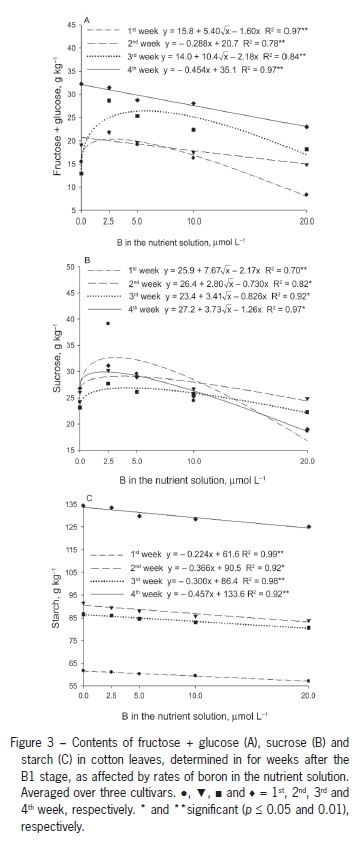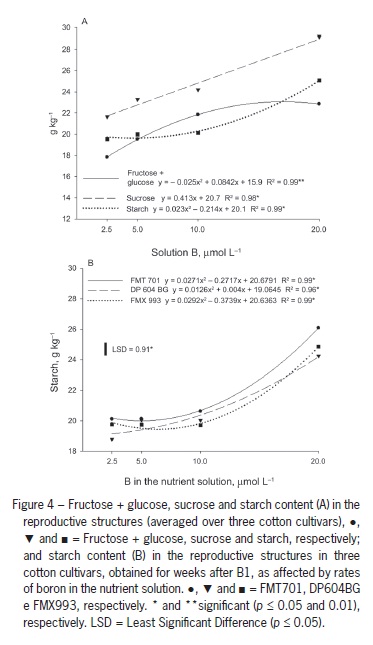An adequate supply of boron (B) is required for the optimal growth and development of cotton (Gossypium hirsutum L.) plants, but the low phloem mobility of B limits the possibilities of correcting B deficiency. There are indications that different cotton cultivars could have different responses to B deficiency. The differences in responses of cotton cultivars to B regarding photoassimilate production and transport were studied in a greenhouse experiment with nutrient solution. Treatments consisted of three cotton cultivars (FMT 701, DP 604BG and FMX 993) and five concentrations of B (0.0, 2.5, 5.0, 10.0 and 20.0 µmol L−1). Sampling began at the phenological stage B1 (first square) and continued for four weeks. The leaf area and the number of reproductive branches and structures decreased due to B deficiency. A higher level of abortion of reproductive structures was observed under B deficiency. Boron deficiency increased the internal CO2 concentration but decreased the transpiration rate, stomatal conductance and photosynthesis. Despite the decrease in photosynthesis, nonstructural carbohydrates accumulated in the leaves due to decreased export to bolls in B-deficient plants. The response to B deficiency is similar among cotton cultivars, which shows that the variability for this trait is low even for cultivars with different genetic backgrounds.
micronutrient; nonstructural carbohydrates; photosynthesis; transpiration





